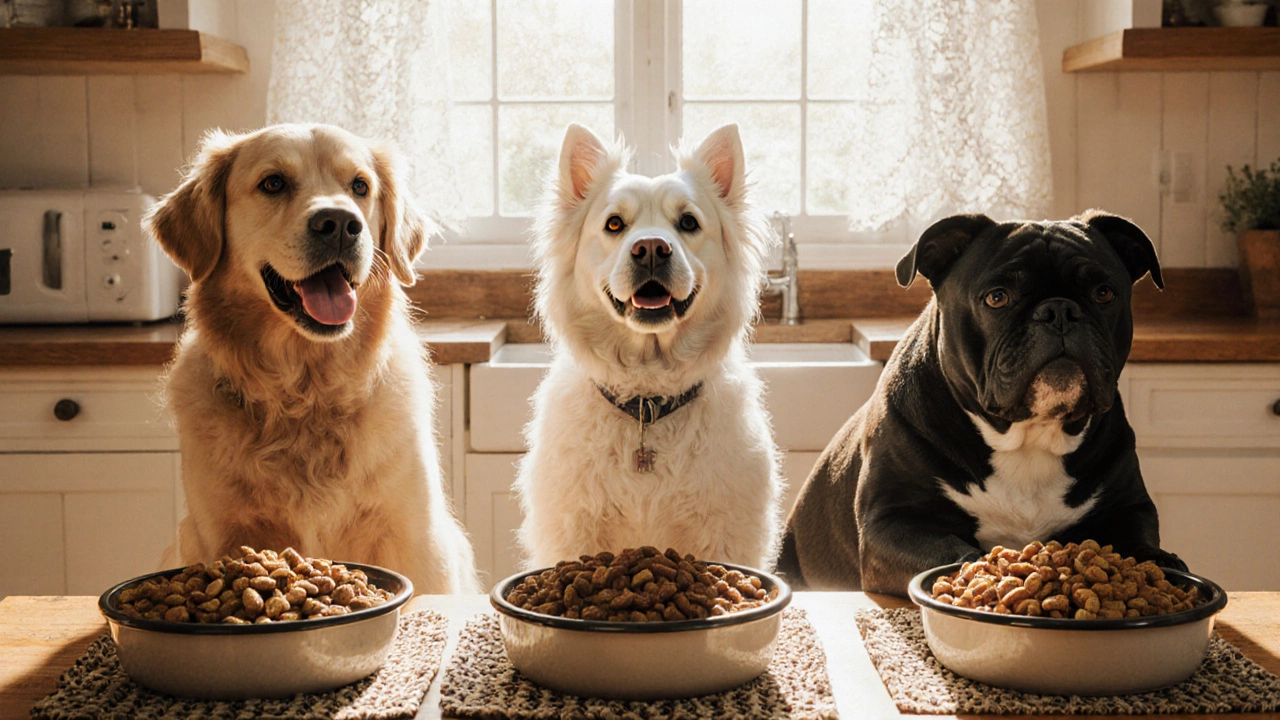Dog Food Preferences – What Your Dog Really Likes (and Why)
Every dog has its own taste, just like people. Figuring out what your pup prefers isn’t just about keeping their bowl full – it helps you give a balanced diet, avoid waste, and prevent picky‑eater tantrums. Below we break down simple ways to read those signals and turn food time into a stress‑free routine.
Reading Your Dog’s Signals
Watch how quickly your dog dives into a new batch of kibble. If they sniff, walk away, or push the bowl away, that’s a red flag. Dogs also show preference through body language: a wagging tail, bright eyes, and quick eating usually mean they’re happy with the flavor. On the flip side, a tucked tail, lip licking, or frequent trips to the water bowl can signal a dislike or even a health issue.
Seasonal changes can shift preferences, too. Warmer months often bring a craving for lighter, wetter foods, while colder weather can spark a turn toward richer, high‑fat meals. Keep a note of these patterns – they’ll help you adapt without constantly guessing.
Practical Tips to Shape Healthy Preferences
Start with a consistent base diet and add small amounts of a new protein or topping. A spoonful of boiled chicken, a dash of pumpkin puree, or a spoon of low‑sodium broth can make kibble more appealing without throwing off nutrition.
If your dog is a picky eater, try the “mix‑and‑match” method. Rotate between two high‑quality formulas every few weeks. This prevents boredom and gives you a chance to see which ingredients spark interest.When switching foods, use the 80/20 rule: 80% old food, 20% new for three days, then shift to 50/50, and so on. This gradual change reduces digestive upset and lets you gauge acceptance each step of the way.
Remember that health problems often masquerade as food aversion. Dental disease, allergies, or gastrointestinal upset can make a dog turn away from favorite meals. If you notice a sudden loss of interest, schedule a quick check‑up with your vet.
Portion size matters as well. Over‑feeding can dull enthusiasm, while under‑feeding can lead to frantic begging. Follow the feeding guidelines on the bag, adjust for activity level, and watch your dog’s body condition score to keep them in the ideal weight range.
Lastly, keep the feeding area calm. Loud noises, other pets, or a busy kitchen can distract a dog and make them reject food. A quiet spot with a clean bowl encourages a relaxed eating experience.
Understanding dog food preferences is a mix of observation, patience, and a bit of trial‑and‑error. Use the tips above, track what works, and you’ll find a routine that keeps your dog satisfied and healthy. Need more ideas? Check out our related posts on nutrition, supplements, and safe feeding practices for deeper insights.
- Morgan Ainsworth
- 0 Comments
What Dog Food Do Dogs Love the Most? Top Picks & Why
Discover which dog foods dogs love most, why they choose them, and a side‑by‑side comparison of the top palatable formulas for every breed.
View More
